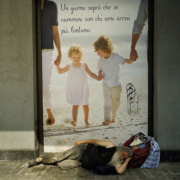Mild Housing New group forms in contemporary Psychiatry
Abstract
Modern Psychiatry, in spite of appearances and perhaps due to its complexity, is not merely a repository of slogans, sterile thoughts and stereotyped actions, but also a breeding ground for colonies of fresh and vital ideas, which always have found space and develop beneath its mantle.
One rapidly developing area of psychiatric care that seems, in particular, to be going against the dominant and organicistic trend is known in Lombardy as “Mild” Housing.
Especially for mental health workers trained in psychoanalysis Mild Housing presents itself as a valuable ally, due to its particular function of recognising and appreciating the irreducibly individual and unique aspects of each patient’s intimacy.
An even more interesting aspect of mild houses, however, is that the national health service has given almost full responsibility for provision of the housing and management of the rehabilitation project to third-sector organisations, that is to subjects fully immersed into the large groupality of local communities and natural social networks.
As a result an opportunity is provided to engage versatile players with a broader communicative register and a greater capacity of involvement than the traditional Italian public psychiatric service of recent decades.
As philosophy and psychoanalysis have been declaring for some time, the golden dimension of the small group is the best antidote to the “seriality” (Sartre, 1960) of large institutions, the ideal therapeutic framework for severe patients (Correale – Nicoletti, 2001), and the ‹‹place of internal reunification, meaning and connections, where the harmony of dream and myth is restored›› (Kaës, 1999). It is a creative and regenerating melting pot from which new feelings and thoughts arise, like flowers appearing between the cracks in cement and growing in defiance of gravity.
Last but not least, although not explicitly stated or perhaps consciously perceived by the legislators, bringing patients together in limited spaces such as these actually facilitates the establishment of small groups.
As philosophy and psychoanalysis have been declaring for some time, the golden dimension of the small group is the best antidote to the “seriality” of large institutions, the ideal therapeutic framework for severe patients, and the ‹‹place of internal reunification, meaning and connections, where the harmony of dream and myth is restored›› (Kaës, 1999).
It is a creative and regenerating melting pot from which new feelings and thoughts arise, like flowers appearing between the cracks in cement and growing in defiance of gravity.


